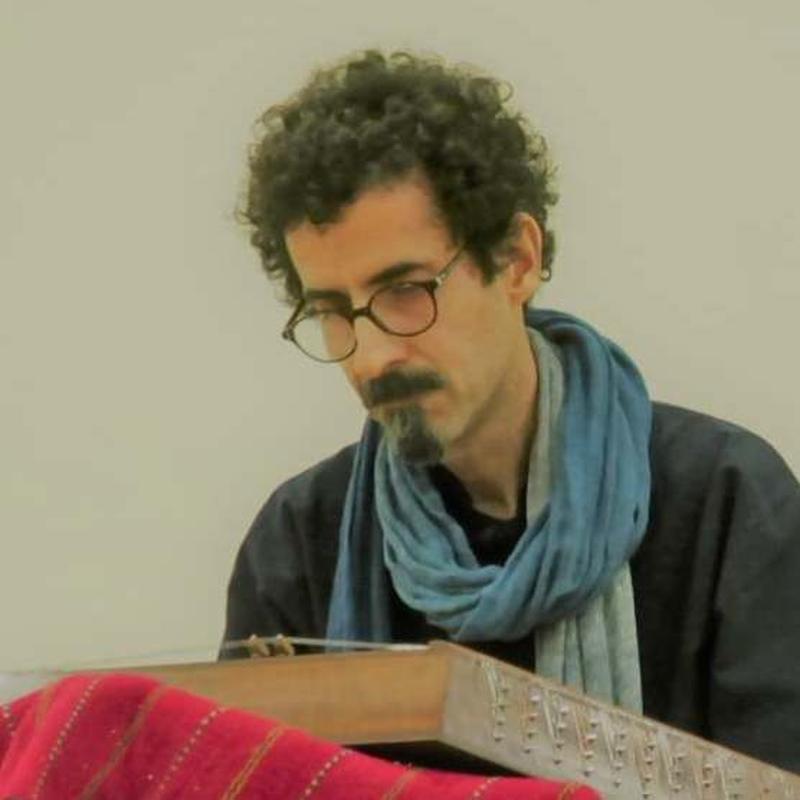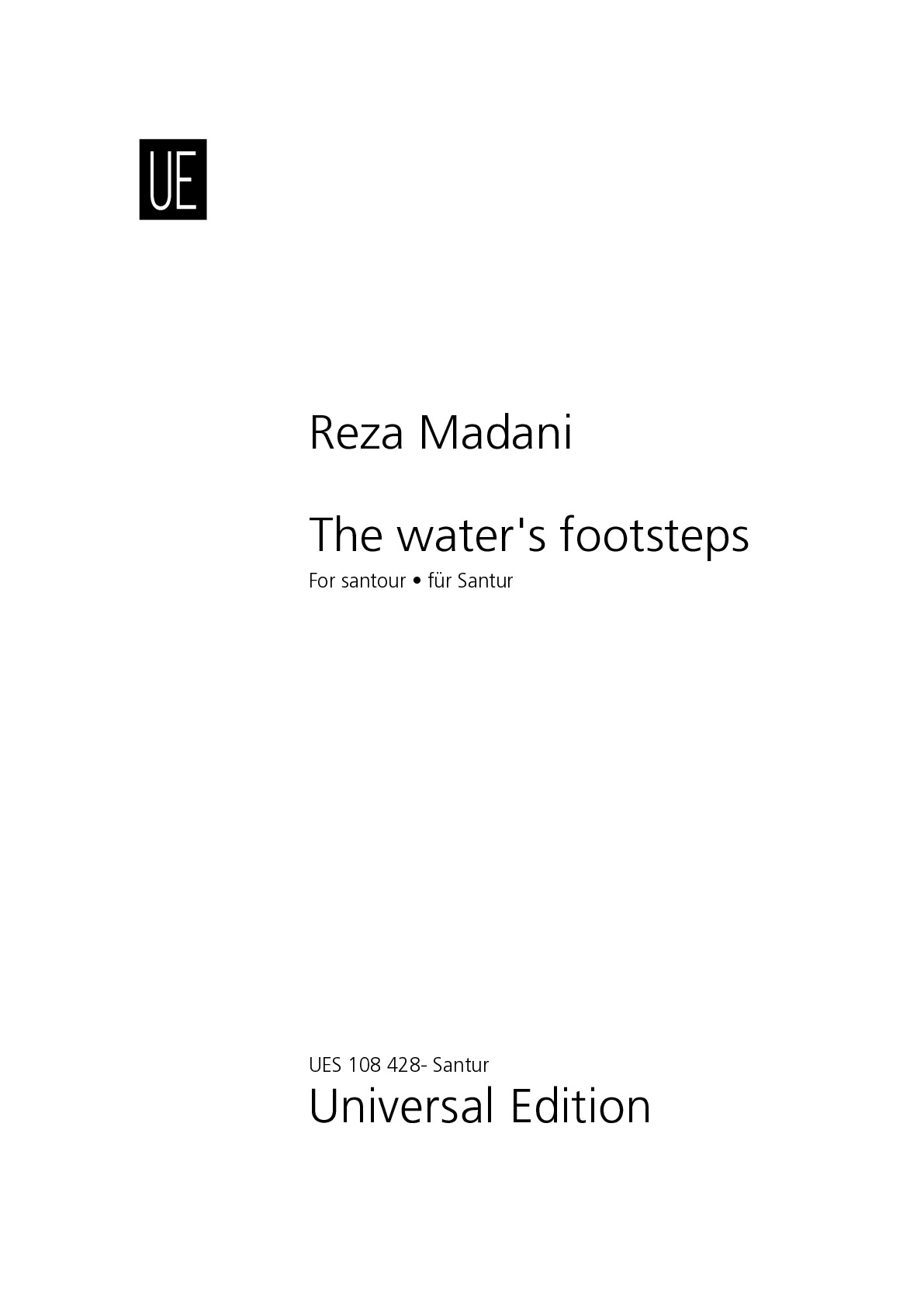

Reza Madani
The water's footsteps
Duration: 7'
Solos:
santur
The water's footsteps
Translation, reprints and more

Reza Madani
The water's footstepsOrchestration: For santour
Type: Noten
Sample pages
Audio preview
Video
Work introduction
To compose this work, I was inspired by a poem of the same name (Sedaye paye aab in Persian) by the Iranian poet Sohrab Sepehri. It is a poem that reflects on nature. The video provided from one of my shows features a fusion performance that combines this composition with modern dance.
What is necessary to perform this work?
Mode and tonality
This piece is written in the Iranian mode Shur in the tonality of G.
Demiflat
A flat note with an arrow on its stem in the key signature or as an accidental indicates a demiflat (called koron in Persian), which lowers the natural note by one quarter tone. On an analog tuner, this corresponds to a pitch halfway between the natural note and its flat note. On a digital tuner, it is the natural note lowered by 50 cents. Some players tune between minus 40 and minus 60 cents, creating subtle variations in the overall feeling conveyed by the piece.
Hammer signs
In Persian, the hammers used to play the santour are called mezrabs. In the music score, hammer signs are indicated by a V for the left-hand mezrab and an n-like shape for the right-hand mezrab.
Section names
Different sections of the piece are marked with Persian labels:
- Goshayesh: Overture or opening
- Pardakht, ghesmate 1: Development, part one
- Pardakht, ghesmate 2: Development, part two
- Foroud: Coda
